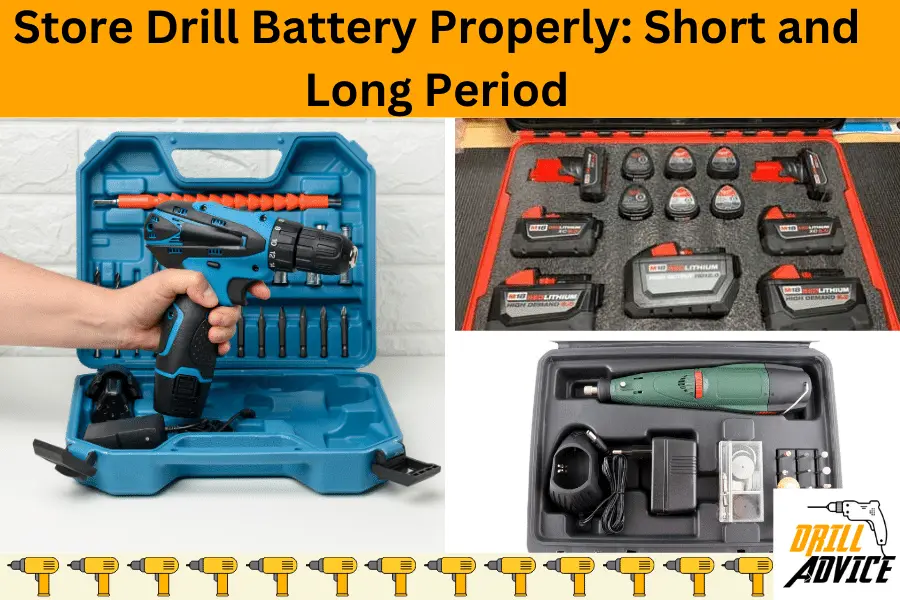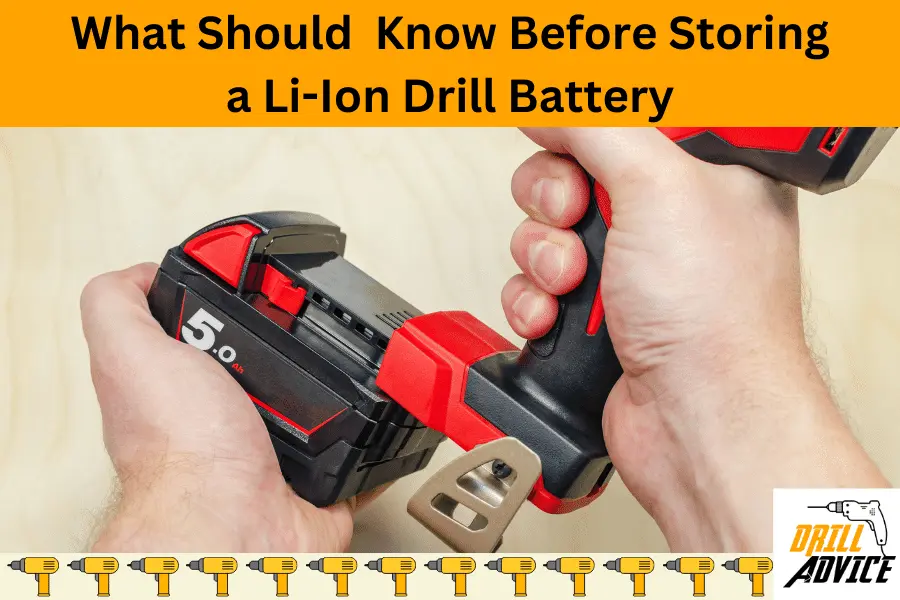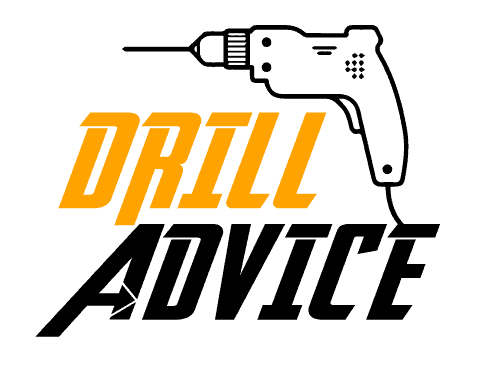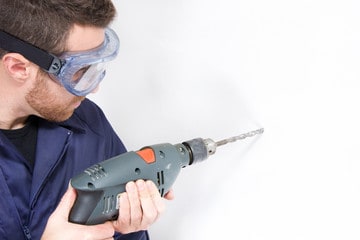Cordless drill batteries should be stored when they are not used for a long period or short period. Most drill batteries are made with Li-Ion or Ni-Cd. These batteries should be stored in proper places with controlled conditions to prevent lost of battery capacity. Before you store a drill battery, you should know how voltage (V), capacity (Ah), discharge rate, performance, environmental impact, power retention, charge time, memory effect, and maintenance vary with the time and room conditions.
Your day to day use drill battery can be stored in the toolbox by connecting the charger or disconnecting with the power tool. If you store the drill battery in a short time period, such as more than a day to 1-2 weeks, you should store them under controlled conditions. But you should follow the special conditions when you store the drill battery for more than 6 months.
Drill batteries are the power source of cordless drills. Those are made of chemical components like Li-Ion, and Ni-Cd. Hence you should not store them in higher temperature, moisture areas, highly flammable areas, metal surfaces, high humidity areas, unventilated spaces, freezers and refrigerators.

What Should I Know Before Storing a Li-Ion Drill Battery?
Before storing a Li-Ion drill battery, you should know its voltage, capacity, discharge rate, performance temperature, environmental impact, power retention, charge time, memory effect, and maintenance to store the drill battery properly.
- Voltage decreasing (V) – Li-Ion battery voltage can decrease due to its self-discharge. It lost around 5% of their charge in the first 24 hours after being charged and then about 1-2% per month afterward
- Capacity (Ah) decreases with higher temperature and lower temperature – Storing a lithium-ion battery at 25 degrees Celsius (77 degrees Fahrenheit) will typically cause it to lose around 20% of its capacity per year. However, if the temperature rises to 40 degrees Celsius (104 degrees Fahrenheit), the loss rate can increase to 35% per year. On the other hand, cold temperatures can also negatively impact the battery’s performance but not its longevity. For instance, at -20 degrees Celsius (-4 degrees Fahrenheit), a li-ion battery may only deliver 50% of its capacity.
- The self-discharge rate is varied with the room temperature – The typical Li-Ion batteries have a self-discharge rate of around 1.5-2% per month. Higher temperatures can accelerate this rate of self-discharge.
- Optimum performance temperature in room temperature – The optimal performance temperature for most Lithium-Ion drill batteries is around room temperature, which is typically 20-25°C (68-77°F).
- Drill batteries can be damaged due to moisture and humidity
- There is no memory effect during Li-Ion battery storing

What is the Best Way to Leave the Drill Battery in Shot Period?
You should disconnect the drill battery from the tool if you leave the drill battery in a short time period such as more than a day to 1-2 weeks. After disconnecting the drill battery from the drill, you should store the drill battery in the below conditions.
Conditions to store drill battery more than a day to 1-2 weeks.
- Keep disconnecting from the tool
- Keep the battery in room temperature.
- Keep away from conduction mediums such as metal swarf and moisture
- Relative humidity level – 50%
- Store the drill battery with low voltage of its maximum voltage
- Do not store in high-temperature area
What is the Best Way to Store the Drill Battery for Daily Usage?
If you use the tool daily, you can leave the battery and tool in your tool box without connecting them. You can keep the battery in the charger. It will not overcharge. But it is better if you can charge 90% maximum.
What is the Best Way to Store Drill Battery for a Long Period?
If you are looking to store the drill battery for a long period, you should follow more special steps than a short period. When a battery is stored long period, it can be dead due to self-discharge. So you had better avoid these factors every time. So you should always follow the conditions below when you store the drill battery for a long period.
Conditions to store drill battery for a long period
- Remove the battery from the tool
- Store the voltage 50% of its maximum voltage ( 18V to 9V)
- Keep the room temperature between 5 °C and 20 °C (41 °F and 68 °F)
- Keep the humidity 50% (do not put the battery in fridge)
- Keep away from the pins, clips, paper clips, conduction wires, dust, etc.
- Insulate the terminals from any insulation
- Do not store in direct sunlight area
- Recharge 50% of its maximum voltage after every 6 months
- Use dry environment
Where Should I Not Store Drill Batteries?
You should not store the drill batteries in the below areas such as higher temperature, moisture areas, highly flammable areas, metal surfaces, high humidity areas, unventilated spaces, freezers, and refrigerators. If you store the drill battery in these areas you can expect performance defects as well as dead battery.
- High temperatures areas – You should avoid storing the battery in an area exposed to direct sunlight or high temperatures, such as in your car during summer.
- Higher moisture or wet locations – You should keep batteries away from water or any other kind of liquid to avoid damaging the battery.
- Close to the higher flammable substances – Don’t store a drill battery near gasoline, propane, or any other flammable substances as it may pose a fire risk.
- Metal surfaces – Don’t keep the battery on metal surfaces. The battery terminals could come in contact with the metal and cause a short circuit.
- Higher humid areas – Higher humidity can adversely affect the battery, so avoid storing it in humid areas.
- Unventilated spaces – Poorly ventilated spaces can increase the risk of overheating and fire.
- Freezer/ refrigerator – This can reduce the capacity of the battery over time
Can I Leave the Drill Battery in the Drill?
You can’t leave drill battery in the drill when it is not in use for more than a day. You should not keep the drill battery with a connecting drill because a connected drill battery cause many drill battery problems including battery drain, decrease the battery life, cause the battery can overheat, potential for overheating, and it reduce the drill performance. Hence, you should keep them separately and store the drill battery in a safe storage place when it is not in use.

